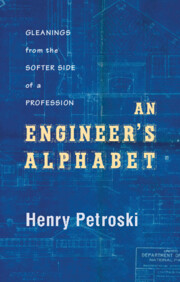H
Published online by Cambridge University Press: 25 October 2011
Summary
hairy-eared engineer. This jocular term has been applied to engineers who are advanced enough in age to have hirsute ears. More importantly, but no less jocularly, hairy-eared engineers are believed to have worked on enough projects over the course of their career to have made every imaginable mistake. This makes such an engineer invaluable to a project where the participants do not wish to repeat past failures. In other words, as the hairy-eared engineer Marvin B. Davis has been quoted as saying, “Every project needs at least one hairy-eared engineer.”
However, since the term “hairy-eared engineer” is most likely to evoke a male image, its usage is open to being termed sexist. Since the 1970s, significant numbers of female engineers have been entering the profession, and enough time has passed that some of them, too, have made their share of mistakes. Perhaps the term “hairy-eared” should be replaced by “gray-haired.” Whatever called, every project can benefit from having one of these experienced engineers aboard.
half-life of technical skills. Half-life is a term used in physics to describe the time required for half of a substance to undergo a process, such as radioactive decay. The term has come to designate the period of usefulness that precedes obsolescence. In the mid-1980s it was estimated that the half-life of an engineer's technical skills was as little as 2.5 years for a software engineer; electrical engineers were estimated to have half-lives of 5 years, and mechanical engineers 7.5 years.
- Type
- Chapter
- Information
- An Engineer's AlphabetGleanings from the Softer Side of a Profession, pp. 135 - 149Publisher: Cambridge University PressPrint publication year: 2011



